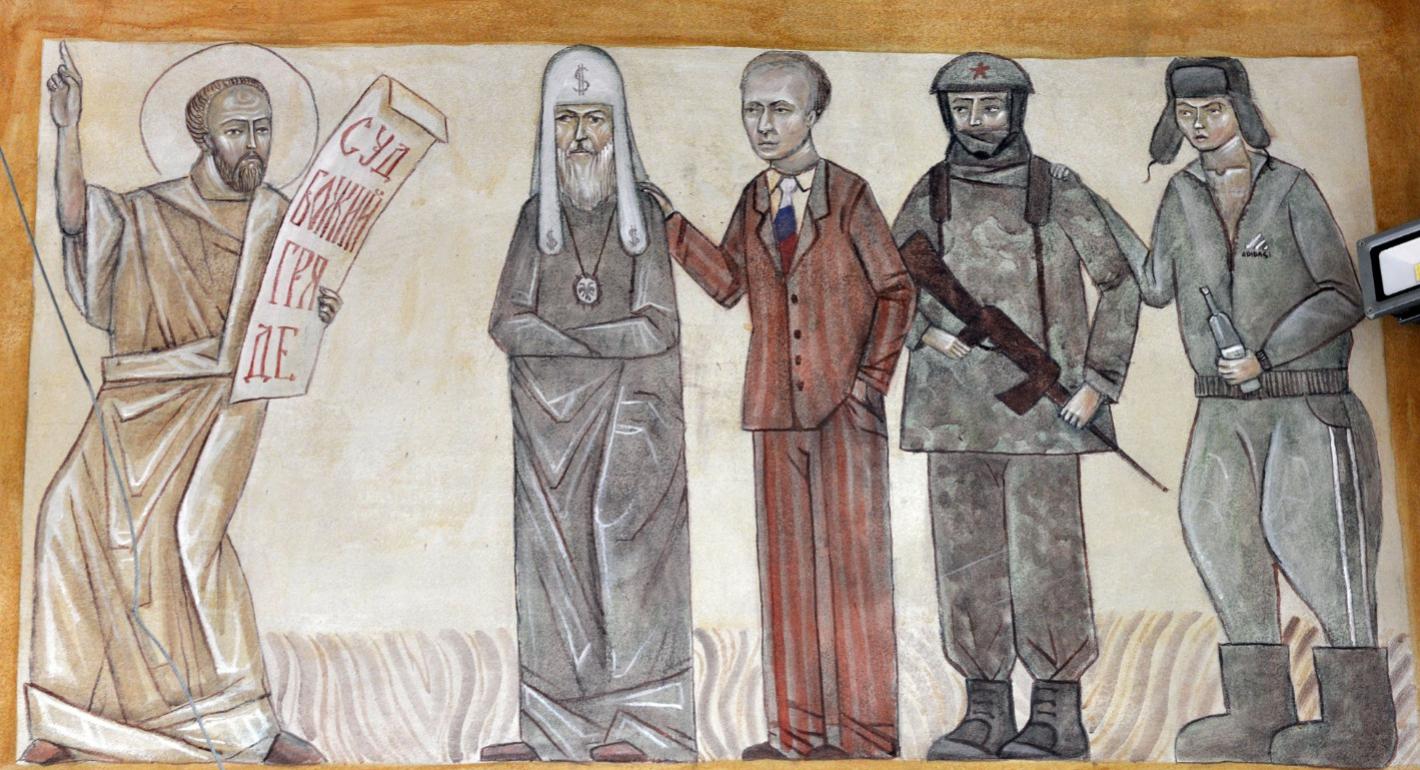The proposal from Patriarch Kirill, head of the Russian Orthodox Church, for a Christmas ceasefire in the war against Ukraine on January 6–7 (when the Russian and Ukrainian Orthodox churches celebrate Christmas) should have seemed like an entirely natural move for a religious leader. Yet coming from someone who has long given his blessing to the war against a neighboring and fellow Orthodox country, it came as a surprise to many.
If the war, which Kirill has described as an “internecine quarrel” (thereby rejecting the notion of Ukrainian statehood), should be stopped over Christmas, then there’s surely nothing good about it. So why has the Patriarch given the conflict his blessing? Furthermore, the expression “internecine quarrel” doesn’t just sound offensive to Ukrainian ears, but to militant Russian “patriots,” too: how can it be internecine, if it is a holy war for a righteous cause?
The Patriarch’s appeal looks like an attempt to put out feelers for any divisions between the Ukrainian army and the civilian population, who are often left without electricity, water, heating, or transport by Russia’s bombing campaign. The Patriarch is claiming, even while speaking on behalf of the aggressor country, that Russia wishes peace for the people of Ukraine, and it is only Ukraine’s own army that is standing in the way, forcing Russia to wage war against innocent civilians. In a way, the aim of the ceasefire proposal was to force the Ukrainian army and politicians to reject it in view of the Ukrainian public.
In this context, the proposal fits into the Kremlin’s version of the situation, in which there are some good, potentially pro-Russian Ukrainians on one hand, and an occupying army of Ukrainian nationalists on the other. This version has already been shown to be at odds with reality, but Russian President Vladimir Putin is clearly having trouble letting go of it, because without it, he will lose the historic title he is striving toward, as the ruler who unified all the Russian lands. To correspond to his own image of his personal place in history, Putin needs to see the people on the other side of the front line as “our own,” held hostage by an external army, government, or propaganda.
Russia’s tactic of bombing Ukraine’s energy infrastructure is an attempt to artificially create the situation the Kremlin expected to find on the ground, but did not: one in which ordinary people will be prepared to make concessions in exchange for peace, even if the army is not. And the proposal for a Christmas ceasefire was an attempt to make use of that situation.
The Patriarch’s appeal, therefore, although apparently intended for Ukrainians, was in fact—like almost everything in Russia—addressed to Putin himself, and tailored to Putin’s vision of reality. Since Putin alone has the authority to stop the hostilities, Kirill’s proposal for a Christmas ceasefire had obviously been agreed with the president in advance, if not made on his direct orders. Once again, the Patriarch was simply carrying out state orders.
Certainly, there was nothing in Kirill’s unusually brief proposal that could sound—even when taken out of context—like a rebuke to the Russian army or its leader for failing to uphold Christian humanitarian values. On the contrary, it was an attempt to portray the Russian leader as more peace-loving and humane than his enemies.
There was also an ulterior goal to the proposal, and that was to pave the way with propaganda for a possible new Russian offensive: “we offered you peace, but you wouldn’t have it.”
Finally, the proposal was an attempt to support the Ukrainian Orthodox Church—which has long been part of the Russian Orthodox Church, albeit with broad autonomy rights—at a time when it is being persecuted for its historical ties with Moscow.
Despite the negative connotations of the phrase “internecine squabble” (something to be prayed for deliverance from, in the Russian-language liturgy), this expression is convenient for Moscow, because it is often used in reference to the historical wars between the principalities of Kyivan Rus: the medieval precursor to Russia, Ukraine, and Belarus. The Russian school syllabus and popular fiction recall the individual existence of those warring principalities as a bad thing; a situation that simply needed someone to come along and resolve it by unifying them.
The expression also dovetails with the popular idea in Russian society that the state of separation between Russia and Ukraine was only ever temporary—perhaps caused by external forces—and must be overcome in favor of unity, even if that requires war.
There was even a message for those same external forces in the ceasefire proposal. Few people outside of Russia closely follow statements made by the Patriarch and other Russian Orthodox Church officials: their militaristic rhetoric, their moralistic proclamations that it would be better for a city to be destroyed than to host a gay parade, and their calls to fight against global Satanism. But some might just take note that the Russian Patriarch called for a ceasefire, and the Ukrainians rejected the proposal.
The ceasefire proposal was clearly not without internal costs for the Patriarchate: the most virulent Russian hawks could hardly welcome the expression about an “internecine squabble,” or even the very idea of a peace initiative. But it is clearly testing a new kind of wartime political technique, in which another wave of military escalation or bombardment will from time to time be preceded by a smokescreen of peace initiatives. The aim is to cause global and Ukrainian public opinion to fluctuate between peace proposals and the horrors of war, in the hope of getting it to stop somewhere that suits the Kremlin.






